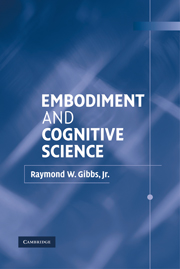3 - Perception and Action
Published online by Cambridge University Press: 05 June 2012
Summary
Perception is the ability to derive meaning from sensory experience in order to guide adaptive behavior. Human perceptual experience is often thought to arise from the input of information from the world through the five senses to different regions of the brain. Most philosophers and psychologists argue that perception is an inferential process that occurs in a series of steps. We do not come into direct contact with the environment, but only some aspects of the environment impinge upon us. But traditional accounts of how we see, hear, smell, taste, and feel do not acknowledge the importance of the entire human body as it moves through the world and engages in intentional action. This neglect of the body in action has led to both simplified views of perceptual experience, and, ironically, overly complex mechanisms to account for how people perceive objects and events in the real world. My aim in this chapter is to explore the importance of embodied action in psychological accounts of human perceptual experience and action.
An Overview of Embodied Perception
An embodied view of perception assumes, as explained by biologist Humberto Maturana (1980: 5), that “Living systems are units of interactions; they exist in an environment. From a purely biological point of view, they cannot be understood independently of the part of the environment with which they interact, the niche; nor can the niche be defined independently of the living system that occupies it.”
- Type
- Chapter
- Information
- Embodiment and Cognitive Science , pp. 42 - 78Publisher: Cambridge University PressPrint publication year: 2005



